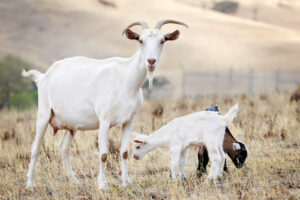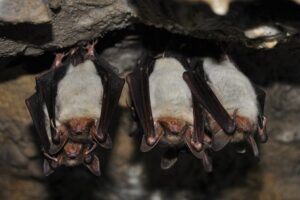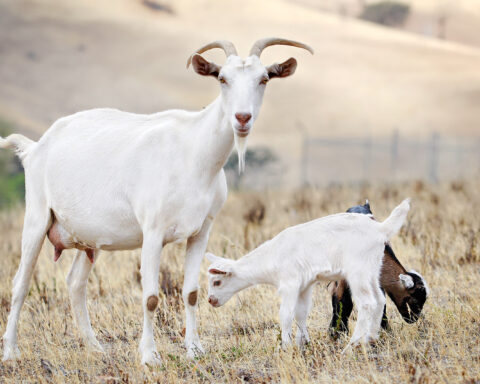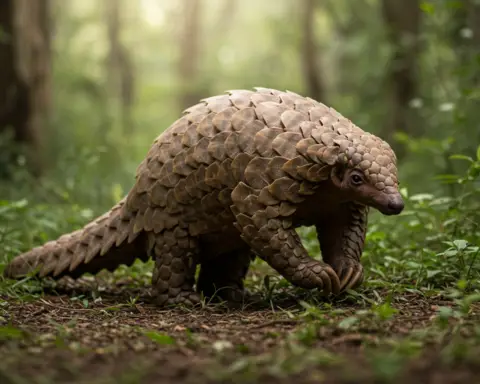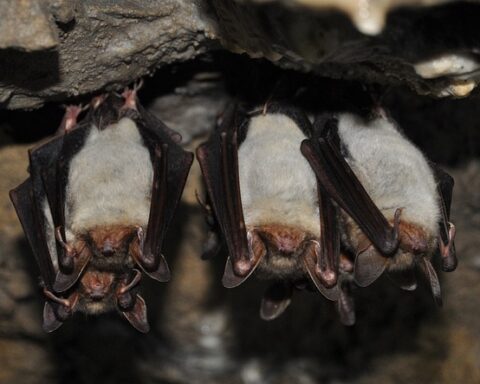While polar bears are the largest land carnivores in the Arctic—they do not necessarily eat large animals. They are little selective in their feeding habits. But polar bears are generally opportunistic hunters just like other bear species. And due to their opportunistic nature they will eat just about anything—ranging from small bird’s eggs to a whale carcass to large adult walrus. Let us see now see what do polar bears mainly eat in the wild.
What Do Polar Bears Eat in the Tundra?
Almost all bears have omnivorous diet except for polar bears. They are pure carnivores—perhaps the most carnivorous of all bear species. Polar bears are the supreme predators of the Northern Hemisphere and they truly are. Over the past few centuries they have evolved to occupy their ecological niche. They don’t seem to have any natural competitor in the arctic. Let’s get back to the polar bear’s diet now. Do you know what do polar bears like to eat? They like to eat seals. Yes, you read it right! Polar bears love to feed on seals much less ringed seals. They would eat it all day long.
Polar bears love to feed on seals much less ringed seals. They would eat it all day long.
Luckily for polar bears, ringed seals are not only the most widespread species in the arctic—they are the smallest too. Adult ringed seals weigh only 90 – 150 pounds. Another reason why polar bears prefer to hunt ringed seals is probably due to its small size. Adults as well as young polar bears find it easy to hunt ringed seals. On the contrary, walruses are probably too big that even adult bears would sometimes hesitate to eat them. Furthermore, ringed seals generally live alone and sometimes in small groups. Thus, they are quite vulnerable to the polar bears almost all the time.
What Animals Do Polar Bears Eat?
Polar bears like to consume seals for they are extremely rich in fatty contents—something that bears need to go by the fasting months. But they have a varied diet. Their diet comprises a good many number of arctic species. Polar bears’ diet includes beluga whales, narwhals, Arctic charr, Arctic hares, caribou, reindeer, muskox, willow ptarmigan, crustaceans, birds’ eggs, snow goose, Svalbard reindeer, white-beaked dolphins, blue mussels, sea ducks, long-tailed duck, dovekie, and common eider.
Read More: What Do Polar Bears Eat?

What Kind of Seals Do Polar Bears Eat?
Main Article: What Seals Do Polar Bears Eat?
Although polar bears like to feed on ringed seals they do nevertheless eat other seal species such as the bearded seals. Although less so often, bears also hunt harp seals, harbor seals, and hooded seals. According to scientists, the entire polar bear population needs one million seals each year to make up their appetites.
Bearded Seals—A Big Meal but Probably a Difficult One!
While ringed seals are most widely distributed in the arctic, the bearded seals are not only less abundant—they are much bigger than the ringed seals. The bearded seal earns its name because of its whiskers which it usually uses to search for underwater food. Unlike ringed seals that weigh only 150 pounds, the bearded seals weigh as much as 500 to 800 pounds in adults. Adult polar bears often hunt bearded seals for they are probably too big for young bears to hunt. Subadult bears however feed on the carcass of bearded seals.
Polar bears also eat harbor seals but since harbor seals are not quite abundant in a polar bear habitat, they don’t really rely on it.
Bearded seals occur in greatest density in areas where ice pack floats on shallow water. Like a ringed seal, the bearded seal will also maintain breathing holes perhaps not in a way ringed seals do. They are far more aware of their potential predators which is why they maintain holes only in drifting ice packs.
Read More: What Do Polar Bears Eat for Kids?
The greatest occurrence of seals is mainly found in the Labrador Sea or Davis Strait. The Davis Strait becomes the heaven for polar bears especially in the month of March. But there is one catch in it. The ice floes are probably not so thick—they can break anytime so the bear falls into the water. The reward is however so big that the bears will take that risk. Hundreds of thousands of seal pups lie on the surface of the sea ice. As it turns out, a good many number of polar bears travel many a miles from the Baffin Island to feed on seals. They will then walk all the way back to the north. Polar bears also eat harbor seals but since harbor seals are not quite abundant in a polar bear habitat, they don’t rely on it.
Bears most likely hunt seals in spring and summer because in winter the ringed seals stay safe beneath the frozen ice.
If the sea ice remains frozen and thick enough to support the polar bear’s weight, the bear will hunt seals no matter what season it is. Bears most likely hunt seals in spring and summer because in winter the ringed seals stay safe beneath the frozen ice—defending their territories. During winter, ringed seals raise their broods freely underneath the landfast ice in the interisland channels.

When and How Do Polar Bears Eat Seals?
Ringed Seals—Pretty Easy Prey!
In the southern and northern Beaufort Sea ringed seals are the most favorite preys of polar bears. Polar bears will smell the seals when the latter come to the surface to breathe. This shows that seals become most vulnerable and possibly the easy target when it gets to the breathing hole. Seals are nonetheless quite intelligent creatures. They are probably not so easy preys as on believes them be. Seals need stable ice packs to survive because they usually maintain breathing holes which they make using their sharp claws. If the sea ice keeps moving the seal might not find the same breathing hole for the same can be lost in a snow storm. Sometimes when the sea ice keeps moving or even if it is stable the seals maintain numerous breathing holes. There are two reasons for this activity. One reason is to avoid polar bears and the other is to get access to the second hole if the first is compromised.
Polar bears will smell the seals when the latter come to the surface to breathe. This shows that seals become most vulnerable and possibly the easy target when it gets to the breathing hole.
During the seals’ breeding season, the female gives birth to her pups in a haul-out lair which mostly occur on the overlying drifts. The ringed seal female produces pups in April. The newborn pups weigh only 12 pounds. They will wean when they are 42 days old. After weaning, the ringed seals are no longer pups. They become young seals that weighed as much as 48 pounds. As for polar bears, the seal pups are probably not aware of their potential predators. This will be the easiest and most nutritious food for polar bears to feed on. Young seals can only see polar bears when the ice melts in summer, so they will be safe in icy water. Polar bears cannot hunt seals without the sea ice. Although bears are remarkable swimmers, they do not stalk seals underwater as well as they do on the sea ice. Besides, seals are far better swimmers than the polar bears.
Sea pups are probably the easiest and most nutritious food for polar bears to feed on. Young seals can only see polar bears when the ice melts in summer, so they will be safe in icy water.
By the next April, young ringed seals begin to grow not only in size but in fats too. Unlike adult males, the female polar bears with their subadults move to the stable landfast areas to hunt ringed seals. The mother will avoid male polar bears because males likely kill her cubs if they find one along the way. However subadult polar bears are not as powerful as males are. They might not be able to break the sea ice to reach the seal’s lair. Most of the young bear’s hunting end up unsuccessful.
Harp Seals—Polar Bear’s Diet in Davis Strait!
In the Davis Strait, the polar bears’ diet comprises quite many different animals. While the Chukchi Sea or Bering Sea population feeds on ringed or bearded seals, the Davis Strait population mainly eats harp seals which probably make up one-third of the polar bear’s diet. The reason behind is that the Davis Strait is home to as many as six million harp seals. Every year in spring, the harp seals produce thousands of pups on the sea ice. During winter, about 15% of the polar bear’s diet consists of harp seals. The Svalbard population likely feeds on harp seals in summer but scientists do not know how much they consume.
Hooded Seals—Polar Bear’s Diet in Canada!
Polar bears can only find hooded seals 15 to 20 days a year. The hooded seals typically produce pups in March in the Davis Strait. The arctic bears walk all the way to the southern Labrador as well as southeastern Baffin Island to hunt seals. The pups are only available to polar bears until they are weaned. Once weaned, hooded seals will swim in the deep waters—far away from the polar bears reach. The polar bears in Greenland rely on hooded seals more in spring than in winter. The hooded seals nonetheless consist of only 2 – 3 percent of the overall polar bear’s diet.
Since hooded seals are much bigger than ringed seals—they fall prey to only adult male bears. Subadult bears cannot afford to take on adult hooded seals. More so, it takes only 4 days for a hooded seal’s pup to become independent. Once weaned, the hooded seal will not be scared of polar bears. That is why polar bears fancy killing young hooded seals.
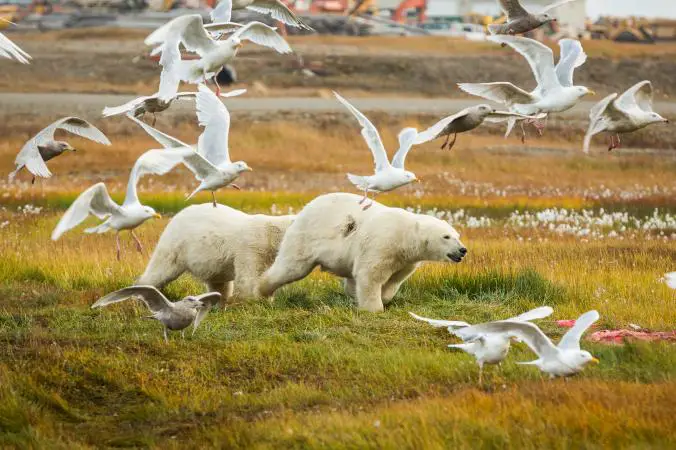
©National Geographic
What Food Do Polar Bears Eat other than Seals?
While ringed seals are the most favorite foods of polar bears there are some other animals that offer equal, if not more, nutritious value to the arctic bears. Some animals are not only bigger than polar bears, they are dangerous too. Only the strongest of polar bears will hunt these preys. Walrus is one of them. Let us now discuss how polar bears hunt walrus.
Walrus—A Dangerous Lunch for Polar Bears!
In the Chukchi Sea, Bering Sea, Canadian Arctic Islands, as well as on the west coast of Alaska, walrus becomes the prey of polar bears. Polar bears hunt walruses not only on the pack ice—they also kill them on land. But polar bears usually prefer young walruses because adults are not only huge—they have got thickest of the skins. Besides, walrus is well equipped with lethal tusks. Polar bears less likely look at adult walruses as a potential food source.
When a polar bear attacks them, the entire walrus colony stampedes to the water in panic thereby leaving many walrus pups on land.
Walruses often congregate in hundreds or even thousands on land. When a polar bear attacks them, the entire walrus colony stampedes to the water in panic thereby leaving many walrus pups on land. These pups become the easy prey for polar bears to feed on. However nutritious walrus may be the polar bears will less likely to prefer walrus over seals. According to Ian Stirling, walruses are quite common in Foxe Basin, Lancaster Sound, Baffin Bay, but polar bears still like to hunt seals in the first place. They would even prefer hooded seals (which are probably the least preferred of all seals) over walruses.
Beluga Whale—An Altogether Different Food!
Polar bears feed on beluga whales but only sometimes. It happens mostly when a beluga whale gets entrapped between the large chunks of ice so they will not be able to swim in open waters. The entrapment such as this is known as sassat in Greenland. When belugas cannot escape the ice-trap they must come to the water surface to breathe. This indeed exposes them to potential predators. Polar bears are well aware of a situation that belugas, once entrapped, cannot escape. For belugas, they can neither breathe in open water nor can they stay within for long. Polar bears keep standing on the sea ice, waiting for the right moment to capture the whale and drag it over the ice. Polar bears have quite powerful neck muscles.
See also: Polar Bear Life Cycle
What Plants Do Polar Bears Eat?
Polar bears are almost exclusively meat-eaters. Unlike other bear species, polar bears do not eat plants—probably not in a way other bears do. Sometimes however they do feed on plants but it’s extremely rare and quite unusual in their diet. Furthermore, Arctic is not the place where plants usually grow so polar bears will ever rely on vegetation. Lyme grass, roots, kelp, and berries are only rarely consumed by the polar bears.
What Types of Fish Do Polar Bears Eat?
Polar bears eat only two types of fish; fourhorn sculpin (Myoxocephalus quadricornis) and Arctic charr (Salvelinus alpinus). The Arctic charr is the one suited to living in the cold waters of alpine lakes as well as subarctic. Polar bears dive into the water to catch these fish however they do not often behave like this since it takes a lot of energy to swim and the fish is probably not worth it.
What Do Polar Bears Eat in Summer?
Polar bears largely depend on sea ice to hunt seals. If there is no ice there will not hunting. It occurs in warmer months when the ice floes break away leaving bears to rely on land animals. Scientists claim that polar bears have probably learnt to find an alternate prey on land. According to scientists when the summer rolls around, white bears feed on birds and other land mammals more often as the sea ice melts earlier each year. They will also raid bird’s nest which is quite unusual and has never been reported before.
References & Further Reading
Rosing-Asvid, A. (2006). “The influence of climate variability on polar bear (Ursus maritimus) and ringed seal (Pusa hispida) population dynamics”. Canadian Journal of Zoology. 84 (3): 357–364. doi:10.1139/z06-001.
Clarkson, Peter L.; Stirling, Ian (1994). “Polar Bears” (PDF). In Hygnstrom, Scott E.; Timm, Robert M.; Larson, Gary E. Prevention and Control of Wildlife Damage. Lincoln: University of Nebraska. pp. C–25 to C–34. Retrieved 13 November 2007.
Stirling Ian: Fitzhenry & Whiteside, 2011, Polar Bears: The Natural History of Threatened Species. ISBN-13: 978-1554551552.

